I saw part of an original Star Trek episode the other day
that got me thinking about our “dark sides.”
It’s the episode where a transporter malfunction splits Captain Kirk into two people. Called “The Enemy Within,” it follows the story of the two as they display unique characteristics. Seems there is a “good” Kirk and an “evil” Kirk, the good one thoughtful and careful, the evil one aggressive and devious.
Spoiler alert: In the end the two versions get back together. What’s interesting is the observations Kirk and the crew make about the two characters in the meantime. It’s not as black and white as it first seems.
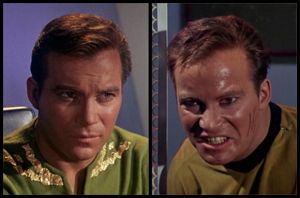 The “good” Kirk finds himself unable to make the tough decisions a captain has to make, stuck in periods of indecision that threaten the lives of his crew. The “evil” Kirk, on the other hand, suffers from the paralyzing fear of being destroyed, a fear that at times makes this aggressive, even mean character cry out like a child.
The “good” Kirk finds himself unable to make the tough decisions a captain has to make, stuck in periods of indecision that threaten the lives of his crew. The “evil” Kirk, on the other hand, suffers from the paralyzing fear of being destroyed, a fear that at times makes this aggressive, even mean character cry out like a child.
Toward the end of the episode, the evil Kirk clings to the good Kirk, begging not to be killed. The good Kirk—nearly paralyzed by this time with indecision—must begrudgingly admit that he needs his evil side, and holding him close, goes through the repaired transporter to be made whole again.
Each of us has a dark side, and most of the time, we do our best to hide it. We try to be nice, help others, and create good things in the world. When we have dark thoughts, we work to ignore them, squash them, and replace them with more positive thinking.
But what if we, like the “good” Kirk, are shortchanging ourselves creatively by doing this? Are there times we should embrace our dark sides, or even (gulp) encourage them?
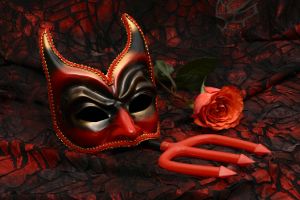 The Key to Creative Originality May Lie in the Dark Side
The Key to Creative Originality May Lie in the Dark Side
Where does our creativity come from, anyway? Most of us would probably say our “good” side, linking creativity with construction, rather than its opposite, destruction. But some question that thinking, suggesting that perhaps our dark sides have more to do with our creativity than we think.
Swiss psychiatrist Carl Jung famously called the dark side the “shadow,” referring to the idea that we rarely see it clearly. He believed it consisted mostly of primitive, negative human emotions like selfishness, greed, anger, lust for power, and envy, all emotions that are “denied expression” in life. He also stated, however, that the shadow side gives us some good qualities:
“[The shadow] also displays a number of good qualities such as normal instincts, appropriate reactions, realistic insights, creative impulses, etc.”
Creative impulses. From the dark side. Hmm.
He went on to say that only by consciously embracing the dark side can we become true individuals, and that the shadow, indeed, is the “door to our individuality.”
As artists, we are always seeking to become more ourselves, so that we may produce more original, artistic work. Could it be that acknowledging and accepting the darker sides of our personalities is the key to achieving this goal?
“It is not until we have truly been shocked into seeing ourselves as we really are,” Jung said, “instead of as we wish or hopefully assume we are, that we can take the first step toward individual reality.”
Breaking the Rules May Lead to Increased Creativity
In 2011, researchers reported that when examining the relationship between creativity and personality, they found that in addition to openness to experience, those who reported engaging in more creative activities were also more likely to have traits like arrogance and pretentiousness. Creativity was less associated with humility and honesty.
In a more recent set of studies, researchers looked into the question of whether creativity may increase the tendency toward dishonesty. Again, those who reported more creative activities were also more likely to behave dishonestly in an experiment. In a follow-up study, those participants who were “primed” with a creative activity were more likely to be dishonest in a subsequent experiment.
In yet another follow-up study of workers on the job, the same researchers discovered that those in departments requiring higher levels of creativity were also more likely to report they would behave unethically in imaginary scenarios.

Of course this doesn’t mean that most creative people are dishonest! But it can open the door to how our darker side may be linked with creativity. According to the researchers, creativity “helps individuals develop original ways to bypass moral rules while allowing them to reinterpret available information in a self-serving way as they attempt to justify their immoral actions. The ability to be creative, combined with the motivation to think outside the box, explains the proposed relationship between creative thinking and dishonesty.”
Some of the connection may have to do with “breaking the rules.” Admit it—the creator in you likes to go against the rules. It’s why so many of us balk at the idea of genre guidelines we “have” to follow, or feel that sense of creative excitement when our stories take an unexpected turn. We like skipping out on the day job to go write, and indeed, may produce better material under that scenario than we would writing on the weekend when we’re not breaking any rules.
Researcher Scott Wiltermuth of the Marshall School of Business at the University of Southern California stated that cheating, for example, gets people out of the “rule-following” mindset, which can lead to increased creativity.
 Creative Types Need to Allow Themselves to Feel Entitled Now and Then
Creative Types Need to Allow Themselves to Feel Entitled Now and Then
One of the negative traits we see displayed too often in today’s world is entitlement—people who feel they deserve the very best, and more than the rest, well, just because they’re special. Turns out that this negative trait may also be connected with creativity.
These folks are more likely to break the rules to get what they want because they feel entitled to it. In their book The Upside of Your Dark Side, authors Todd Kashdan and Biswas-Diener note that President Theodore Roosevelt, for example, was “that rare person with equal access to both the light and dark sides of his personality.” He broke the rules when he wanted to, ignoring social conventions and thriving because of it.
Later research reported that entitled people find it easier to act on their creative desires, as they are less likely to be conflicted with guilt or feelings of responsibility toward others. Rather than worry about whether his actions may put his family in the poorhouse, an entitled entrepreneur may simply go after his creative idea because he feels he deserves to. If he succeeds wildly, his gamble pays off. Of course, he could also fail miserably, and both he and his family would suffer because of it.
Researchers put participants through an experiment that temporarily inflated their sense of entitlement. On group of subjects wrote about why they deserved the best, or why they should get their way, while a control group wrote about why they were not more deserving than others.
Results showed that those “primed” with the entitlement exercise experienced greater increases in creativity on a subsequent test than the control group who didn’t feel entitled.
 Squashing the Shadow Side May Inhibit Creativity
Squashing the Shadow Side May Inhibit Creativity
Mateo Sol, a prominent psychospiritual teacher, goes so far as to describe our more socially acceptable traits as “mundane,” while the more primitive (perhaps exciting or enticing?) facets of our personalities are hidden in the shadow:
“It’s astounding to realize that often the mundane characteristics in people are the ones that are socially acceptable. In essence, any ‘primitive’ traits within us are sent to our Shadow Selves, but at the same time, any creative, unique, innovative and different ideas also get sent to our Shadow Selves because they’re not socially acceptable.”
That’s a bit scary, as it suggests that as we squash the shadow side, so too may we squash the creative part of ourselves.
Deepak Chopra said nearly that when talking about his book The Shadow Effect, co-written with Debbie Ford and Marianne Williamson:
“If you had only truth, goodness, and harmony on the inside, and the complete absence of the other, there would be no creative impulse.”
In fact, it may be our willingness to delve into the darker, messier sides of ourselves that unleashes our creative potential. Writer, producer, and director Joss Whedon (Avengers, Buffy the Vampire Slayer) is quoted as saying: “I believe the best way to examine anything is to go to a dark place. You can’t be a storyteller and a speechwriter at the same time.”
Debbie Ford, author of The Dark Side of the Light Chasers (as well as the co-author of the Deepak Chopra book listed above), says that only by uncovering and embracing our dark sides can be become whole. She goes a step further to state that when we ignore or squash this side of ourselves, we are less likely to fulfill our potential, instead chasing dreams that aren’t ours or filling our time with empty chores and tasks and to-do lists.
The great actor Anthony Hopkins, who played Hannibal Lector in The Silence of the Lambs, is no stranger to exploring the darker side of his own personality. He was quoted in Psychology Today as saying:
“I think the healthy way to live is to make friends with the beast inside oneself, and that means not the beast but the shadow. The dark side of one’s nature. [So] have fun with it and . . . accept everything about [yourself]”.
Indeed, the shadow, according to Jung, is a “source of renewal,” the place we must turn to when we feel we’re stuck in a rut, or can’t find a way to expand and move forward. The process, however, isn’t easy, as most writers know.
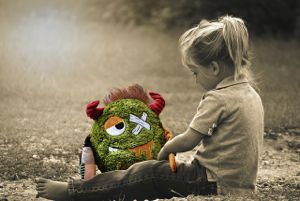 How Embracing Your Dark Side Can Help You Progress, Creatively
How Embracing Your Dark Side Can Help You Progress, Creatively
Writer, scholar, and speaker Laura K Kerr, Ph.D., has a wonderful article on her site entitled, “Embracing the Shadow Side of Creativity.” She notes that while a life of creative work can create a deep sense of accomplishment and lasting transformation, the journey is littered with difficult, dark emotions that can be very hard to deal with. Those who experienced childhood traumas may find the way even more difficult.
Writing can be wonderfully cathartic, and even as it may bring up unwanted emotions from the dark side, can also help us to release them into the open, accept them, and deal with them. Working with things like self-doubt, fear, and shame—along with the less accepted desire for recognition—and even learning to “befriend,” them, Kerr says, can be greatly beneficial for the creative person:
“Through mastery and sustained efforts, there is the possibility of learning how to integrate all aspects of self, which is a great benefit to a person who can commit to a life centered on creating.”
She goes on to agree with others that true authenticity, which includes both the best and worst parts of ourselves, is the source of our best work.
7 Ways Writers Can Tune Into the Dark Side
If you’ve been so busy being your best self that your shadow side remains well hidden, I have a few ways you can get back in touch with it. If you’re interested in exploring it further, I’d recommend the books by Deepak Chopra and Debbie Ford listed in this article, as well as the work of Carl Jung and other psychiatrists who’ve written on the subject. It can be a positive lifetime goal to explore more of the darkness that exists within you, to better create the light you want to bring into the world.
1. Explore the shadow in your work.
This is the easiest way for writers and other artists to get in touch with their darker sides: we can assign these characteristics to characters in our stories, and then see how they play out. Don’t be surprised if the more you lift your inhibitions on the page, the stronger, more passionate work you create.
2. Use it to get out of a rut.
If you find yourself blocked in a story or in your writing career, try asking your darker self what it would like to do. That doesn’t mean you act on the suggestion, but you may be able to use it in a constructive way.
Let’s say your darker side wants to ditch your day job and take a trip to Hawaii. Just the thought of it perks you up. You can feel it. But likely doing that would put you and your family in financial jeopardy. Hearing this desire, however, can help you get out of a rut. All you have to do is downplay it a bit.
Take a few days off work and go somewhere new nearby. Let your darker side out of your responsibilities for just a short time. “Ditch school,” in a way, and give in a little. See if the experience doesn’t wrestle lose some ideas on how you may move forward.
3. Employ it to protect your writing time and your dreams.
Many writers have a hard time saying “no” to others, and thus don’t get as much time on their own creative work as they’d like. Here’s where embracing that selfish side can help. Allow yourself to put yourself first now and then. Ask yourself what you’d like to do and do it without guilt. (Or at least ignore the guilt.) Realize that your darker side can help you fulfill your creative potential if you let it.
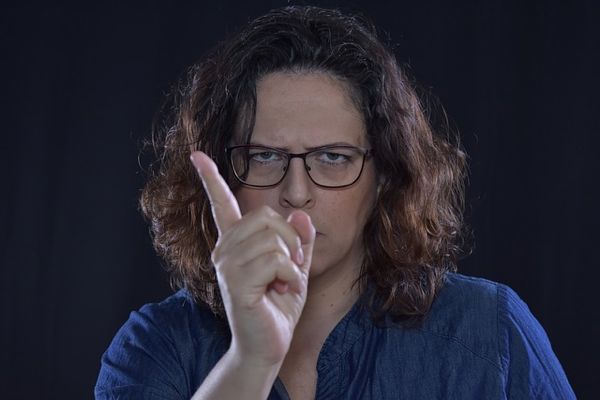
4. Let your dark side help you make decisions.
Like the “good” captain Kirk in the Star Trek episode, your “good” side may struggle with making decisions. You are easily able to see the pros and cons of going either way, so you end up stuck and take no action at all, which is usually the worst thing you can do.
If you’re faced with a decision, or wanting to make a decision that affects your creative work and career, tune into your darker nature. What would that shadow side say? Indulge it for a bit to hear its opinion. It could be that you need a little of that grit and anger to chase away the “wimpy” side and make the right decision for you at the moment.
5. Break the rules!
This one is the most fun, right? There’s no denying that breaking the rules sets the mind alive. So find ways to break them in your life—ways that won’t wreak havoc. Stay up too late. Call in sick. Go out with your friends and go a little crazy. Wear something that makes you feel cool.
Then when you go to the page, see if you can lift the shackles a little bit. Allow your darker side to emerge and play. You may not end up keeping all of what you produce, but you may find some gold in there.
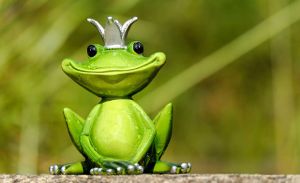 6. Feel entitled.
6. Feel entitled.
You may be a very humble person, but that can keep you from taking advantage of all the writing opportunities that come your way. Take a day to act like an entitled person would act.
When you go into a restaurant, for example, imagine you deserve the best table and the best service. Upgrade your writing space with something new. Give yourself the gift of a writing retreat or writing conference—because you deserve it.
It’s important that you truly believe you have a right to go after your writing dreams, whatever they are at the moment. Acting “as if” can help you bring that part of yourself forward just enough to jumpstart your progress.
7. Get a little angry.
Psychologist Steven A. Diamond is quoted in The Creative Mind as saying that though most of us view anger negatively, “anger can also motivate constructive and creative behavior.” (Read more about how anger can help writers succeed here.)
Because anger is so socially unacceptable, most of us swallow it or repress it. We can express it in healthy ways, though, and tap into the emotion that way. Think about someone who ticked you off, remember a time when you felt unfairly treated, or focus a current issue that stokes you up. Feel the anger, then express it either in a conversation with an understanding friend, in a period of exercise, or probably most effective for writers, in a letter, story, or other piece of writing. Allow your anger to bring your more lively words to life.
This type of experience can also help you to tap into this emotion when you need to, say during an angry scene in your novel. If you repress your anger too often, on the other hand, you can have a hard time describing it accurately when you need to.
How do you use your dark side to inspire creativity?
Sources
Douglas Eby, “Owning Our Shadow Self,” The Creative Mind, http://thecreativemind.net/1426/owning-our-shadow-self/.
Stephen A. Diamond, “Essential Secrets of Psychotherapy: What is the ‘Shadow?’” Psychology Today, April 20, 2012, https://www.psychologytoday.com/blog/evil-deeds/201204/essential-secrets-psychotherapy-what-is-the-shadow.
“Carl Jung and the Shadow: the Hidden Power of Our Dark Side,” Academy of Ideas, 2015, http://academyofideas.com/2015/12/carl-jung-and-the-shadow-the-hidden-power-of-our-dark-side/.
Scott Barry Kaufman, “The Dark Side of Creativity,” Psychology Today, December 5, 2011, https://www.psychologytoday.com/blog/beautiful-minds/201112/the-dark-side-creativity.
Paul J. Silvia, et al., “Cantankerous Creativity: Honesty—Humility, Agreeableness, and the HEXACO Structure of Creative Achievement,” Personality and Individual Differences, October 2011; 51(5):687-689.
Kristin Ohlson, “A Touch of Evil,” Aeon, April 28, 2015, https://aeon.co/essays/why-it-s-enlightening-to-get-in-touch-with-your-dark-side.
Mateo Sol, “Shadow Self: Embracing Your Inner Darkness,” LonerWolf, 2016, https://lonerwolf.com/shadow-self/.
Leon F. Seltzer, “How Dark is Your Dark Side?” Psychology Today, December 5, 2014, https://www.psychologytoday.com/blog/evolution-the-self/201412/just-how-dark-is-your-dark-side.
Margarita Tartakovsky, M.S., “Owning Our Dark Sides,” PsychCentral, September 22, 2014, https://psychcentral.com/blog/archives/2014/09/22/owning-our-dark-sides/.
Linda K. Kerr, “Embracing the Shadow Side of Creativity,” LauraKKerr.com, September 16, 2013, http://www.laurakkerr.com/2013/09/16/embrace-the-shadow/.
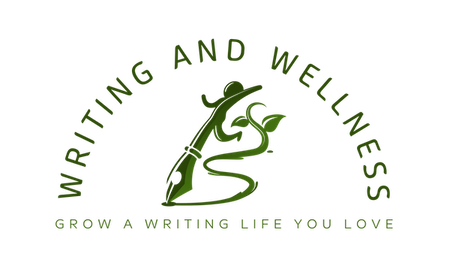

Finally! I have an excuse. Thanks…
Ha ha ha ha ha. Go for it, Jo-Anne! :O)
As soon as I saw this, Colleen, I thought of Jung’s Shadow self! This is a fascinating post, and love the links to creativity. We all have that shadow side, and yep, it’s where the creativity lives. I think it’s time for me to go break some rules!
Ha ha. Sounds like fun, Susan!